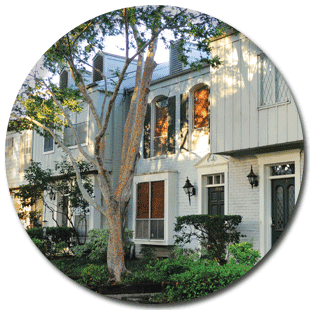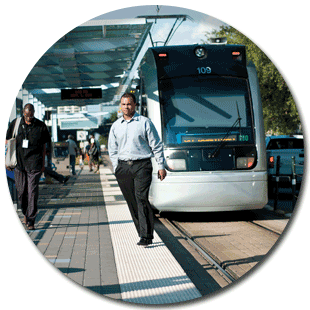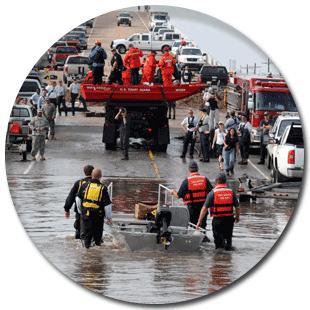Our Great Region 2040 Existing Conditions Report
The Existing Conditions Report provides a snapshot of our region's context at the inception of Our Great Region 2040.
Establishing A Baseline
The Existing Conditions Report helped establish baseline information about the region that may be used to measure progress and change over time. This report also identifies existing regional plans and a sampling of implementation initiatives. County-level profiles serve as a companion to this report.
Download the full Existing Conditions Report to learn more.
Want to know more about how the report was developed? Download a summary.
Education, employment, and the overall economy are considered when establishing existing conditions for Our Region's Economic Development. Additional information about these existing conditions and more are available in the Existing Conditions Report.
-
Our region’s population (age 25 and older) has a college completion rate of 27.9% which is equivalent to the national average. High school graduation rates have improved in all 13 counties in our region over the past five years. However, only about 80% of residents age 25 and older have a high school diploma/GED. This is lower than the national average of 85.3%. In our region, approximately 22% of children under age five are enrolled in preschool, which falls below the national average of 24%.
-
Houston ranks 17th out of 100 global cities for the cost of doing business. Our region’s major economic drivers include four of the nation’s busiest ports, the world’s largest medical campus, and significant agricultural production.
-
By November 2011, our region had regained all of the jobs lost since December 2008. However, the unemployment rate of 6.3% as of September 2012, declined from the January 2010 peak of 8.8%, is still two full percentage points above the pre-recession low of 4.2% in December 2007.

Open spaces and other natural resources are considered when establishing existing conditions for our region's Environment. Additional information about these existing conditions and more are available in the Existing Conditions Report.
-
Our region has more than 3 million acres of high value environmental resources, including coastal prairie, bottomland forest, upland forest, waterbodies, and tidal wetlands. The estimated annual value of environmental benefits, such as air pollution removal and carbon storage and sequestration, provided by our region’s trees is $456 million.
-
Our region has 275,000 acres of parkland at more than 3,000 public park sites, for an average of about 18 acres/1,000 people.
-
Our region has 749 LEED (Leadership in Energy and Environmental Design) registered and/or certified projects, making our area one of the nation’s leaders in green building.

Access to care, overall health, and opportunities for leading more healthy lifestyles, such as proximity to parks, bike trails, and grocery stores, are considered when establishing existing conditions for our region's Healthy Communities. Additional information about these existing conditions and more are available in the Existing Conditions Report.
Our region is served by 125 emergency care and psychiatric hospitals.
28.6% of our region's residents are obese, 5% of Our Region's population has asthma, and 8.5% of our region's residents have diabetes.
48% of our region's residents live within one quarter of mile of a park or trail.
There is a shortage of primary care facilities accessible to surrounding rural county residents. Eight of the 13 counties in our region have a health professional shortage.

Affordability and proximity to services and employment are considered when establishing existing conditions for our region's Housing. Additional information about these existing conditions and more are available in the Existing Conditions Report.
The percent of owned housing units versus rented units in our region is around 62%. Single-family homes represent 71% of the built housing in our region, and multifamily residences (two or more families in the same building) account for 29% of the housing units.
The median household income in our region is $54,146 and the median home value is $139,80 Housing is considered affordable if it costs less than 30% of a household budget. In our region, approximately 25% of household income is spent on housing. This percentage plus transportation costs (around 26% on average in our region) makes up 51% of the average household’s expenditures.
Homelessness is an ongoing issue in the greater Houston area. During the 2012 annual “Point-In-Time” count of the homeless in the greater Houston area over 50% of those counted were unsheltered and one in 25, or 3.6% of those counted were under the age of 18.

Roadways, alternatives to driving, and goods movement are considered when establishing existing conditions for our region's Transportation. Additional information about these existing conditions and more are available in the Existing Conditions Report.
In our region, the percentage of people bicycling or walking to work is 1.8%. The percentage of residents taking public transit to work is 2.24%.
Our region includes 24,035 lane miles of highways and roads, 149 miles of HOV and managed lanes, 8 miles of light rail (with an additional 15 miles under construction), and around 980 miles of bikeways.
About half of our region’s residents do not have access to transit, defined as being within a half mile of a rail or bus stop.
In our region, nearly 700 million tons of freight is transported annually by our regional system which includes 24,000 miles of roadways, three Class I railroads, four deepwater ports, two major air cargo facilities, and more than 21,000 miles of pipelines.
The Port of Houston creates more than one million jobs in Texas and generates more than $178 billion in economic activity.

Vulnerability and the ability to respond to man-made and natural disasters are considered when establishing existing conditions for our region's Resiliency. Additional information about these existing conditions and more are available in the Existing Conditions Report.
Just over one-quarter of our region's residents live within a hurricane evacuation zone, and nearly 35% live within a 100-year floodplain.
Our region suffered through one of the worst droughts on record beginning in October 2010. As a result 10% of the entire tree canopy died within two years of the drought, which is around 66 million trees.
H-GAC has distributed $43 million within the “Ike Round 2.2” allocation to local governments within our region for HUD Disaster Recovery Enhancement Funds eligible projects, including land use planning, updating flood insurance rate maps, buy-outs, drainage projects, and other mitigation measures.
In 2008, Hurricane Ike caused over $27.8 billion in damages, making it one of the nation’s costliest storms in history. Ike’s storm surge affected about 205,000 people.


